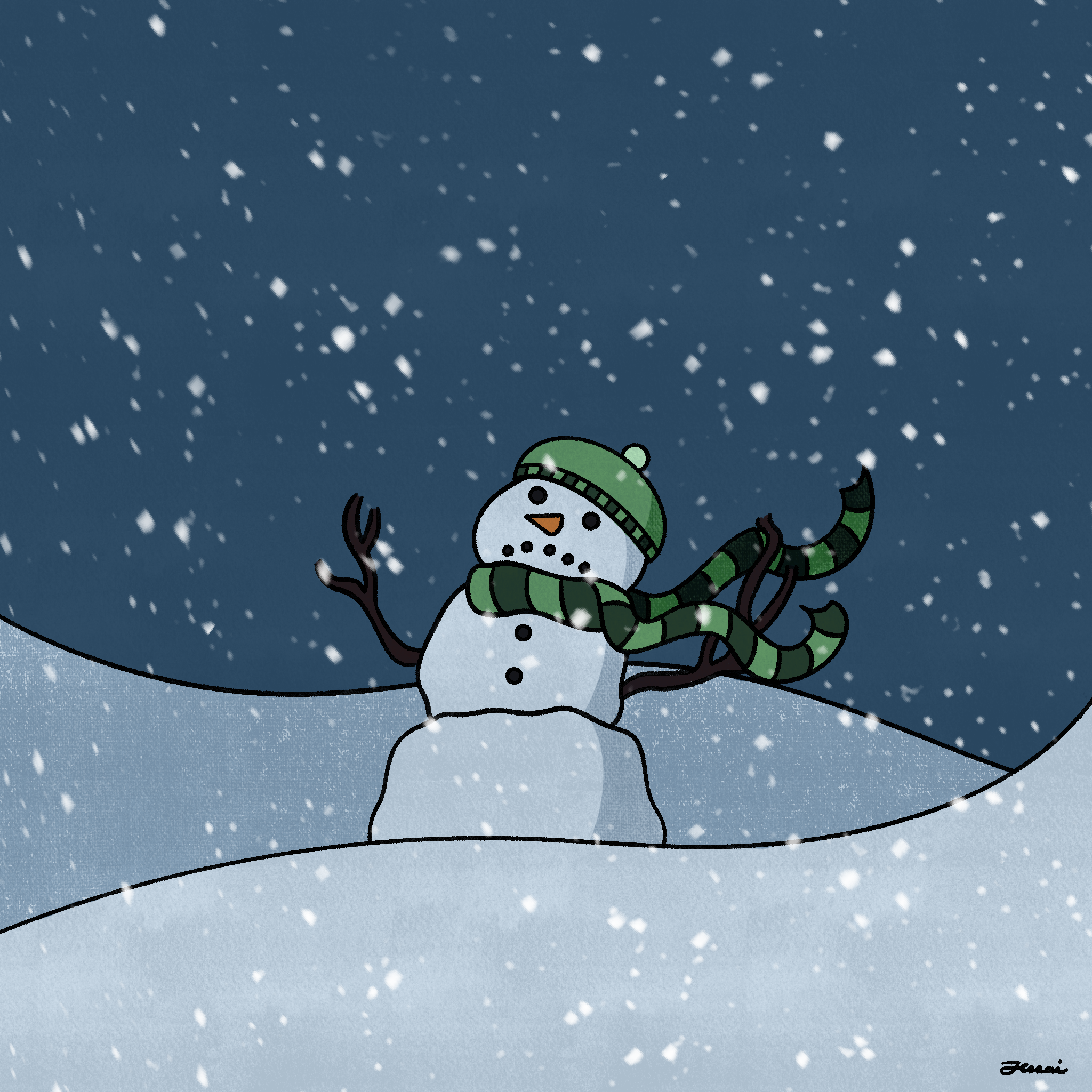
Jessai Flores
As a child of the Sonoran Desert, I grew up cherishing snow. It would only come once every few years, and it was an event. Not in the social sense — we didn’t get snow days at the first sign of frozen precipitation, which often seems to be a stereotype of the southern states. In Tucson, Arizona, I never got a snow day. I did, occasionally, get snow.
On those special days, a flurry of icy clusters would float down from the sky. They were never quite flakes — I didn’t realize that actual snowflakes were real until I came to Connecticut — but they were something softer than hail. It was hauntingly beautiful, the way this ice would coat the landscape. I say coat and not blanket, since this film of snow never seemed to rise more than a millimeter or two thick. Attempts to roll snowballs off the ground resulted in clumps of what were mostly pebbles, but I still made tiny, rock-filled snowmen whenever I could.
When it snowed in the evening or night, there would be a winter wonderland in the morning, in its rarest form. Even if the white crystals struggled to stick to the ground, they always seemed to manage to encase the vegetation, of which there is surprisingly plenty in the Sonoran Desert. Cacti spines became horizontal icicles while palo verde trees and creosote bushes transformed into giant white feathers bowed down by the frost. Everything sparkled, the sun transforming the flora into disco balls while simultaneously melting the scene away. The desert snow was a paradox, witnessed only by the early risers.
The snow was crisp in Arizona. Temperatures rarely dropped below freezing, so while it was certainly cold for me, someone who is most comfortable at 95 degrees, it was never unbearable. In Connecticut, it’s entirely excruciating.
The snow bites in New Haven. Logically, I was prepared for this, knowing to bundle up in my thickest coat before I ran outside to see the first snowfall of my time at Yale. I was awed at the insistence of this frozen downpour, uncompromising in its mission to obscure the already novel grass in a crunchy shroud. The glamour, however, quickly dissipated as my body registered the burning pain of just how cold it was. It was somehow even worse when I finally got back inside, assaulted by the heater and left dripping as the little white flecks on my clothes and hair turned to water.
When it’s below freezing, the last thing I want is literal ice slapping into my face. This is especially true when I’m half-running to class, straining my muscles in a desperate attempt to stay upright on the sidewalk-turned-skating-rink. When I express this sentiment to my peers, I’m often told to be grateful that it’s not just cold, that at least the snow is pretty. It is stunning, for those few morning hours before footsteps and tires turn it to a grayish mush that quick-sands my boots every time I step off a curb. At least in Arizona, the snow doesn’t stick around long enough to succumb to this fate.
Connecticut snow dampened my wonder at the phenomenon, though I must admit that the snowflakes themselves — they’re perfect. Literally, of course, with their delicate arms extended in mathematical symmetry, edges and corners microscopically proportionate. The first time I saw one land on my mittened hand, it was as if a film had been removed from my eyes. I’ve always been a fan of fantasy, of opening a book and entering a realm of magic and mythic. When I beheld my first real snowflake, that magic entered my world. I wished that I could string that tiny crystal on a chain and wear it as a necklace, but its beauty, by form, resisted capture.
In a way, nature is otherworldly. Human civilization pushes the wilderness over a line, making it something to enter on hikes and beach days, rather than something to live in full-time. But the snowflakes, speaking their language of wet murmurs and hissing smacks, shooting stars come down to Earth, structurally harmonious, always unique, are generous enough to grace us with their presence, even in our sprawling cities.
I may not love the snow anymore, but I am the snowflakes’ biggest fan. Fleeting on a smaller scale than the desert flurries, these northeast snowflakes write poetry across my jacket sleeves. When I’m freezing, when I’m slipping, when I’m half convinced I’ve succumb to frostbite or hypothermia or some other ailment of the cold, these little crystals land softly, catching my eye for just a moment with their fantastical perfection, before they’re lost again amid the storm.







